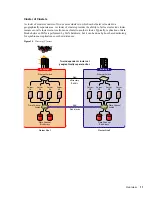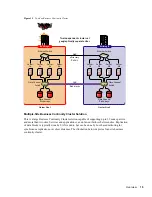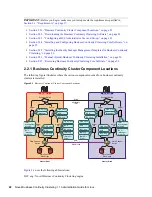
12
Novell Business Continuity Clustering 1.1 Administration Guide for Linux
Implementation Comparison
Table 1-1
Disaster Recovery Implementation Comparison
Stretch Cluster
Cluster of Clusters
Advantages
It automatically fails over.
It is easier to manage than
separate clusters.
The chance of LUNs at both
locations becoming primary is
minimized.
eDirectory partitions don't need
to span the cluster.
Each cluster can be in a
separate eDirectory tree.
IP addresses for each cluster
can be on different IP subnets.
It accommodates more than two
sites, and cluster resources can
fail over to separate clusters
(multiple-site fan-out failover
support).
SBD partitions are not mirrored
between sites.
Disadvantages
Failure of site interconnect can
result in LUNs becoming primary
at both locations (split brain
problem) if host-based mirroring
is used.
An SBD partition must be
mirrored between sites.
It accommodates only two sites.
All IP addresses must reside in
the same subnet.
The eDirectory partition must
span the cluster.
Resource configurations must be
kept in sync manually.
Summary of Contents for BUSINESS CONTINUITY CLUSTERING 1.1 SP1
Page 6: ...6 Novell Business Continuity Clustering 1 1 Administration Guide for Linux...
Page 8: ...8 Novell Business Continuity Clustering 1 1 Administration Guide for Linux...
Page 58: ...58 Novell Business Continuity Clustering 1 1 Administration Guide for Linux...
Page 84: ...84 Novell Business Continuity Clustering 1 1 Administration Guide for Linux...
Page 96: ...96 Novell Business Continuity Clustering 1 1 Administration Guide for Linux...













































